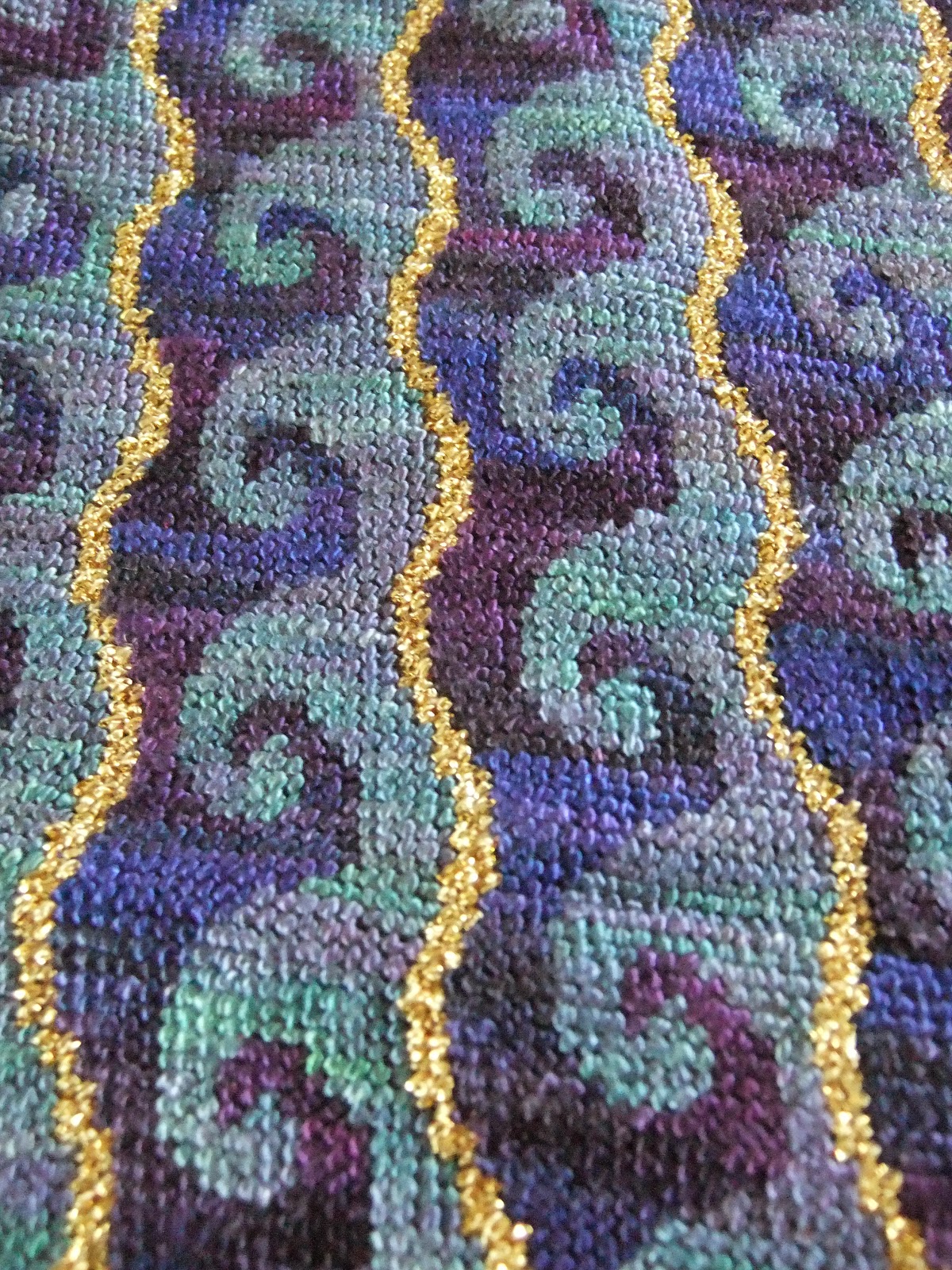Feedback from the tutor for assignment 5 highlighted some areas where I need to do further work (see here for action points and my thoughts).
Having carefully read the tutor feedback and reflected on the work I submitted for Assignment 5 I decided to produce an alternative piece for this assignment. In the event I am submitting two additional pieces as I feel that both express different aspects of waves and have very different qualities.
The first piece retained the template and essential wave structure of the silk-painted piece. For this piece, however, I interpreted the design in stitch. I hand-dyed a range of yarns using a hand-painting technique and procion mx dyes. I tried a range of different yarn types, drawing from the experience gained in the braiding and weaving exercises where I combined different yarn and fibre types to achieve a range of effects. I dyed:
Wool, wool-silk blend (2), superwash wool:
(L to R): Wools (2), cotton, raw silk, Wensleydale aran, Viscose chenille
Wensleydale aran, raw silk, silk (2), cotton, Wensleydale aran
I then tried several combinations to see which yarns worked best together.
Wool, wool-silk
Pure silk
Pure silk, wool, silk, wool-silk,
Pure silk, goldfingering, silk
I wanted the waistcoat to be rich and opulent with deep, intense colours and I found that the pure silk with the goldfingering best achieved this. The wool was a little dull, the Wensleydale too fuzzy, the raw silk was nice and might have made an interesting contrast but was thicker than the pure silk. Again, the cotton was a quite nice, soft contrast but a little thick. The viscose chenille was not suited to stitching at the intended stitch count as there was excessive wear on the yarn and it shed its chenille tufts. For these reasons I selected the pure silk with an accent of goldfingering for sumptuous, rich colour and the glitz of the gold.
Kaffe Fassett is one of my personal favourite artists, both for his amazing use of colour and for his ability to interpret his art in a wide variety of media (knitting, stitch, patchwork, fine art, pottery and fabric to name just a few). I particularly like his needlepoint work and how he takes needlepoint beyond the traditional cushion cover, sampler or hanging into less territory with furnishings, clothing and even shoes. Having seen a number of Kaffe Fassett waistcoats at his recent exhibitions - some knitted, some stitched - I particularly admired the elegance and simplicity of the design in this piece. The style is simple, the colours extravagant (it is Kaffe Fassett after all) and the finished piece looks wearable but head-turning.
I also took inspiration from classic waistcoat forms as I wanted to produce an artistic, hand-crafted twist on a classic garment, placing the emphasis on the uniqueness of the fabric rather than the garment styling.
Vintage silk waistcoat
Vintage wool waistcoat
The colours I have chosen are perhaps more subtle than a Kaffe Fassett but I feel that the shapes and the use of the goldfingering still draw the eye. Worked in different colours this design would be equally adaptable to both men's and womenswear.
The placing of the stripes was quite deliberate so as to match across the front once fasteners have been added. I am thinking Chinese-style frog fasteners at the moment to give a vintage feel. Something simple such as this:
Or with a little more bling (in gold for this waistcoat but shown here in silver):
I used a pre-purchased waistcoat pattern for the design, choosing a simple pattern over something more complex to avoid overpowering the design itself. I then printed a large chart using a stitch program. I sketched out the repeating wave shape on tracing paper and overlaid this on the chart. I produced two separate charts, one for each front, taking account of the need for the fronts to match when fastened. The back and lining were a satin in a co-ordinating colour. Elastic cinching at the back enhanced the fit.
As I was concerned about the suitability of the aida for a garment, I made and washed a sample. Although the finished piece is quite stiff, once washed the aida softens, giving it sufficient flexibility for a garment. With careful washing this waistcoat should withstand reasonable wear.
Thoughts:
The use of hand-dyed yarn gives the design subtle tonal qualities which reflect the many shades of the ocean waves. The design is simple in shape but is in keeping with a classic striped-style waistcoat, an essential part of the inspiration for this project. The patterning is detailed but the use of a simple repetition in the motif gives a smooth line, making it less visually intense.
















